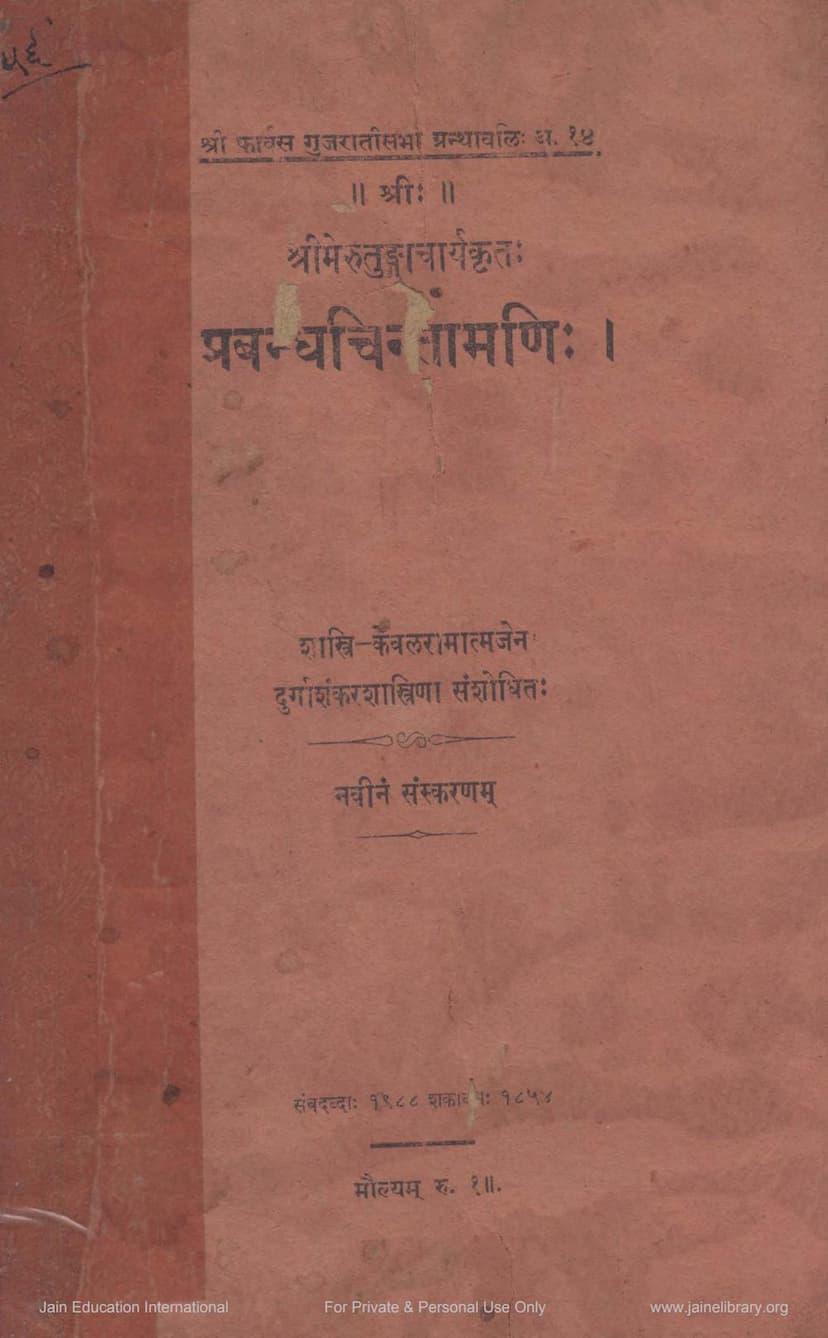Prabandh Chintamani
Added to library: September 2, 2025

Summary
The Prabandhachintamani is a collection of narrative anecdotes and stories compiled by Merutungacharya. This particular edition was edited by Durgashankar K. Shastri and published by The Forbes Gujarati Sabha in Bombay in VS 1988 (AD 1932). The book is presented as part of the Forbes Gujarati Sabha Series, number 14.
The text includes a preface by the first editor, Shastri Keralram, and detailed introductions explaining the significance and historical value of the work. Merutungacharya himself stated that the work was compiled to entertain scholars, but this edition highlights its importance as a source for the medieval history of Gujarat. The editor emphasizes the reliability of the historical accounts within the Prabandhachintamani, particularly regarding the reign periods of kings like Mulraja and the historical events described. The preface also notes that the text was completed in VS 1361 in Vardhamanpura.
The book itself is structured into five Prakashas (parts), detailing the lives and stories of various notable individuals, primarily rulers and scholars, from ancient India. The catalog link provided (jainqq.org) suggests the text is a Jain work.
The Prabandhachintamani is known for its rich narrative style, often incorporating legends, folklore, and historical figures. The stories are presented in a chronological or thematic manner, focusing on the virtues and deeds of the characters, often illustrating Jain ethical principles.
Key figures and stories mentioned in the provided pages, spanning across the five Prakashas, include:
- Vikramarka: The first Prakasha begins with the story of King Vikramarka, highlighting his courage, generosity, and wit. Stories include his encounter with a Vetala, his interactions with poets like Kalidasa, and his legendary reign.
- Shalivahana: The text recounts the story of King Shalivahana, emphasizing his rise to power and patronage of arts and literature.
- Bhuyara and other rulers of the Chapotkata dynasty: The narrative follows the lineage of kings like Vanaraja, Yogaraja, Kshemaraja, Bhuyada, Vairisinha, Ratnaditya, and Samantasimha, detailing their reigns and significant events.
- Mulraja: The reign and exploits of King Mulraja are described.
- Munja and Bhoja: The lives of the Paramara kings Munja and Bhoja are central to the text, with stories focusing on their wisdom, humor, and encounters with various personalities.
- Bhima: The interactions and potential rivalry between King Bhoja and King Bhima are explored.
- Siddharaja: The reign of King Siddharaja is a major focus, detailing his relationship with poets like Hemachandra, his administrative prowess, and his religious policies, including his patronage of Jainism.
- Kumarapala: The life and reign of King Kumarapala are extensively covered, including his conversion to Jainism under the influence of Hemachandra, his patronage of the arts and religion, and his interactions with ministers like Vastupala and Tejapala.
- Vastupala and Tejapala: The stories of these influential ministers, their patronage of Jain temples and scholars, and their significant contributions are highlighted.
- Various other figures and anecdotes: The Prakasha includes a wide array of miscellaneous stories (Prakirnaka) featuring kings, scholars, poets, and ascetics, often illustrating moral lessons, philosophical insights, and historical anecdotes.
The editorship of Durgashankar K. Shastri and the publication by The Forbes Gujarati Sabha indicate a scholarly effort to preserve and disseminate this significant historical and cultural text in Gujarati literature. The detailed listing of various manuscript sources used in the editing process (pages 9-11) highlights the meticulousness of the scholarly work. The inclusion of a table of contents (pages 12-15) further illustrates the vast scope of the Prabandhachintamani.